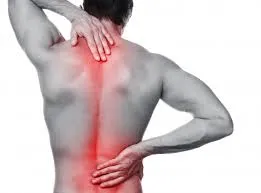5 Common Causes of Spine Pain

Spine pain can range from a mild inconvenience to something that disrupts daily life. For many adults, back discomfort can make even simple tasks feel challenging. While occasional aches are common, understanding the underlying causes of spine pain allows you to better manage and address it when necessary. Here, we’ll explore five common reasons why you might experience pain in your spine, how it affects your overall well-being, and when it’s time to seek specialized care.
It’s More Than Just Back Pain
The spine is a complex structure responsible for supporting your body, protecting your nervous system, and providing flexibility and mobility. When issues arise, they don’t just affect the back itself—they may impact your posture, physical activity, and daily comfort, as well as contribute to fatigue or stress. When left unaddressed, ongoing spine pain could make it harder to maintain a healthy, active lifestyle.
Understanding the Common Causes of Spine Pain
Recognizing the root causes of back pain is key to finding effective relief and preventing future discomfort. Gaining this understanding helps you to make informed decisions about your spine health and work toward lasting comfort and mobility. Below are five common causes to look for and some simple things you can do to help alleviate back pain.
1. Poor Posture Problems
One of the leading contributors to spine pain is poor posture. Whether it’s slouching at a desk, hunching over a laptop, or habitually looking down at your phone, incorrect alignment places undue stress on the spine. Over time, this tension often leads to muscle strain, stiffness, and discomfort in your lower back or neck. Adopting ergonomic work setups and taking regular breaks to adjust your posture make a significant difference in reducing strain.
2. Sedentary Lifestyles
Modern life often involves long hours of sitting, from working at a desk to hours spent commuting or relaxing on the couch. A lack of physical activity can weaken the muscles that support your spine, making it more vulnerable to pain and injury. Regular exercise, even light activities such as walking or stretching, helps keep these muscles strong and promotes better spinal health overall.
3. Age-Related Wear and Tear
Spine pain often develops naturally as part of the aging process. Conditions such as osteoarthritis or degenerative disc disease occur when the cartilage protecting the joints or cushioning between spinal discs breaks down. This leads to stiffness, pain, or even reduced flexibility. While aging is unavoidable, managing weight, staying active, and adopting a healthy lifestyle help minimize these effects.
4. Injuries and Strains
Sometimes spine pain is sudden and acute, often stemming from injuries or improper movements. Lifting heavy objects without proper technique, twisting awkwardly, or even minor accidents can place stress on the spine. These injuries may cause inflammation, strained muscles, or even damage to the vertebrae or discs. Rest, ice, and over-the-counter pain management techniques may help with minor strains, but serious injuries should be evaluated by a healthcare professional.
5. Chronic Conditions
Certain underlying health conditions can also contribute to recurring spine pain. Sciatica—a condition where the sciatic nerve is compressed—can cause pain that radiates down the lower back and into the legs. Similarly, spinal stenosis narrows the spaces within the spine, which may add pressure to nerves and cause discomfort. If these ongoing issues interfere with your quality of life, speaking with a specialist can guide you toward relief.
Treatment Options and When to Seek Care
Treatment options for spine pain vary depending on the cause. Over-the-counter medications, gentle stretching, physical therapy, or chiropractic adjustments alleviate many types of discomfort. If your pain is persistent, worsening, or accompanied by symptoms like numbness or weakness, consulting an orthopedist or pain management specialist is a good next step. They can offer personalized care, whether through advanced therapies, injections, or other tailored treatments.
Finding Your Path to Relief
Spine pain is a common experience for many adults, but it doesn’t have to be something you live with indefinitely. From improving posture and staying active to addressing chronic conditions with a healthcare provider, there are a variety of ways to manage and reduce pain. If spine discomfort is affecting your ability to enjoy life, taking action now will lead to better health and a more comfortable future.





